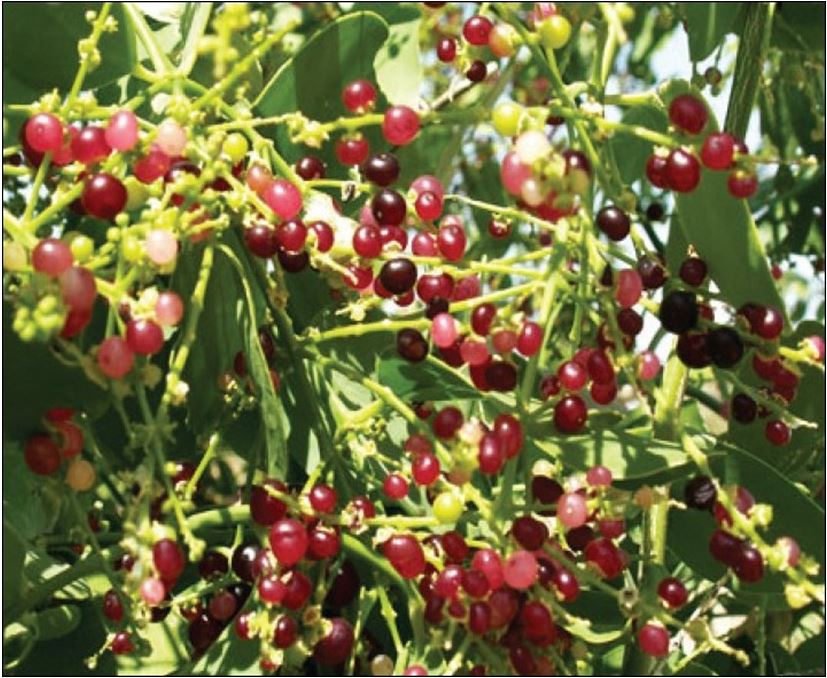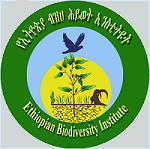 Bioprospecting potential of Salvadora persica L.for Access and Benefit Sharing
Bioprospecting potential of Salvadora persica L.for Access and Benefit Sharing
| Release date | 08/04/2017 |
|---|---|
| Contributor | IT Team EBI |
| Geographical coverage | Salvadora persica is widespread, notably in thorn shrubs, desert floodplains, river and stream bank vegetation, and grassy savannahs., |
| Keywords | Salvadora persica L., |
|
Bioprospecting potential of Salvadora persica L. for Access and Benefit Sharing |
 |
|
Reviewed by Tesfaye Bekele Genetic Resources Access and Benefit Sharing Directorate April 2017 |
| 1. Introduction Ethiopia is lucky to be gifted with rich biodiversity and traditional knowledge that could pioneer successful bioprospecting. However, like any other developing countries, Ethiopia lacks technical expertise and monetary resources to explore them significantly. The only option for Ethiopia is to collaborate with the developed nations or domestic investors and interested pharmaceutical, cosmetics and other companies alike and jointly explore them strategically and wisely. In doing so, the model of cooperation should be such that it builds the science infrastructure within, preserve and protect the local traditional medicinal and other knowledge reducing the brain drain, and equally share the outcome of the joint projects.
The Ethiopian Biodiversity Institute (EBI) is the nationwide capable authority through ABS directorate playing the practical role of the Nagoya protocol on Access and Benefit sharing of genetic resources and associated traditional knowledge. Ethiopia has the officially permitted outline for the implementation of the ABS. The laws concerning the National Access and Benefit Sharing framework is the Proclamation on Access to genetic Resources and Community Knowledge and Community Rights (Proclamation No 482/2006 and Regulation 169/2009). Based on these frameworks, the country has been implementing the access and benefit sharing objective of the CBD. The Proclamation includes a range of issues such as ownership, user rights, and conditions for access, benefit sharing, types of benefits, powers and responsibilities among the others. Therefore, the objective of this manuscript is to encourage any bioprospecting company or an individual interested to work on the genetic resource, Salvadora persica L., for biological, pharmacological and industrial activities. 2. Botanic description of the plantSalvadora persica L. is an evergreen shrub. It is also by the common names in Amharic: ‘Adee’ or ‘Yeharar Mefakiya’. It is a popular teeth cleaning stick throughout the Arabian Peninsula, as well as the wider Muslim world (Wikipedia, 2016).
The plant grows to a height of 4-6 m tall with a short trunk, white bark and smooth green leaves. Its main trunk is erect or trailing with profusely branched, wide crown of crooked, straggling and drooping branches; young branches are green in color; bark slightly rough, grayish-brown on main stem, paler elsewhere. Leaves are oblong-elliptic to almost circular, 3 x 7 cm, light to dark green, rather fleshy, sometimes with wart like glandular dots and dense, rather loose hairs; apex broadly tapering to rounded, sharp tipped; base broadly tapering; margin entire; petiole up to 10 mm long; leaves in opposite pairs. Flowers are greenish to yellowish, very small, in loose, slender-branched axillary or terminal panicles, up to 10 cm long. Fruits are spherical, fleshy, 5-10 mm in diameter, pink to scarlet when mature, and single seeded. Seeds turn from pink to purple-red and are semi-transparent when mature (Orwa et al., 2009). 3. HabitatSalvadora persica is widespread, notably in thorn shrubs, desert floodplains, river and stream bank vegetation, and grassy savannahs. It prefers areas where groundwater is readily available, by riverbanks, on perimeters of waterholes, in seasonally wet sites, and along drainage lines in arid zones. It is also found in valleys, on dunes and on termite mounds. The tree is able to tolerate a very dry environment with mean annual rainfall of less than 200 mm. It is highly salt tolerant, it can grow on coastal regions and inland saline soils (Orwa et al., 2009). 4. DistributionSalvadora persica is distributed in most part of Ethiopia: Dry and Moist Kolla agro-climatic zones of Afar plains, Shewa, Hararge, Borena, SNNPR, Gamo Gofa, and Kaffa, growing with altitudinal ranges of 0–1,350 m. It is found associated with Acacia-Commiphora woodland especially with Capparidaceae. It is found near spring and desert flood plains mostly on saline, sandy or loamy soils (Azene Bekele, 2007). 5. Chemical composition of Salvadora persicaThe chemical constituents of Salvadora persica are flavonoids, salvadorine, cyanogenic glycosides, lignans, saponins, alkaloids, tannins, linoleic acid, steraric acid, salvadourea, vitamin C, silica and different salts (Ahmad and Rajagopal, 2013). The seed contains oil known as "Kinknail oil". Nutritionally, the seed contains fat (45-48%), albuminoids (18-94%), carbohydrates (23-48%), fibre (5-80%), and ash (3.50%) (Mathur Sujata 2015). 6. Significance in Biological, Pharmacological and Industrial activities6.1. Medicinal property Salvadora persica L. has great medicinal potential. Almost all the parts of the tree are used for curing human ailments. The plant possesses aphrodisiac, alexiteric, analgesic, anti-inflammatory, anti-pyretic, astringent, and diuretic and bitter stomachic activities. It has great medicinal use in the treatment of nose troubles, piles, scabies, leucoderma, scurvy, gonorrhea, boils and toothache. It is used for treating hookworm infection, venereal diseases, rheumatism; relieving cough and asthma; lowering cholesterol plasma levels. It is used as a laxative. The seed oil is useful for the treatment of some skin diseases and joint pains (Ahmad and Rajagopal, 2013). 6.1.1. Anti-microbial activity Salvadora persica L. is known to exhibit significant antimicrobial (antibiotic and antiseptic) activity against both aerobic as well as anaerobic bacteria of teeth with inflamed gums and necrotic pulps (Ahmad and Rajagopal, 2013). Salvadora persica possesses anti-fungal properties. The diluted acetone extract of dry Salvadora persica stems is reported to show the highest inhibitory activity against Candida albicans, Candida glabrata, and Candida parapsilosis strains. The dried S. persica is reported to have a greater anti-fungal activity against several Candida strains (both oral isolates and reference strains) than the fresh plant (Noumi et al., 2010). 6.1.2. Anticariogenic property Salvadora persica is one of the most commonly used medicinal plants for oral hygiene among global Muslim community. Toothbrushes prepared from the roots and small branches of Salvadora persica are highly useful for cleaning teeth and maintaining dental health. Salvadora persica possesses anti-plaque properties. It is reported to have potent activity for dental complaints. The roots and twigs of this tree have been used for teeth cleaning since ancient times. Fresh S. persica impregnated in 0.1% sodium fluoride (NaF) or a maximum of 0.5% NaF was used for a day for the prevention of dental caries. Baeshen et al. (2011) reported that the remineralizing effect of fluoridated chewing sticks on white spot lesions in post orthodontic patients. 6.1.3. Anti-malarial activity Salvadora persica root possesses anti-plasmodial activity, and is used as part of remedies to treat malaria (Tesfaye Seifu, 2004). References Ahmad, H. and Rajagopal, K. (2013). Biological activities of Salvadora persica L. (Meswak). Med. Aromat. Plants. 2:4 Azene Bekele Tesemma (2007). Useful trees of Ethiopia: identification, propagation and management in 17 agro-ecological Zones. Nairobi: RELMA in ICRAF Project, 552p. Baeshen, H.A., Lingström, P. and Birkhed, D., (2011). Effect of fluoridated chewing sticks (Miswaks) on white spot lesions in postorthodontic patients. Am.J.Orthod.Dentofacial Orthop. 140(3):291-297. Mathur Sujata (2015). Medicinally potent and highly salt tolerant plant of arid zone - Salvadora persica L. (Meswak): A Review. Journal of Plant Sciences Special Issue: Medicinal Plants 3 (1): 45-49. Noumi, E., Snoussi, M., Hajlaoui, H., Valentin, E. and Bakhrouf, A. (2010). Antifungal properties of Salvadora persica and Juglans regia L. extracts against oral Candida strains. Eur. J. Clin. Microbiol. Infect. Dis. 29(1):81–88. Orwa, C., Mutua, A., Kindt, R., Jamnadass, R. and Anthony, S. (2009). Agro-forester Data base: A tree reference and selection guide version 4.0. (http://www.worldagroforestry.org/sites/treedbs/treedatabases.asp) Tesfaye Seifu (2004). Ethnobotanical and Ethnopharmaceutical studies on medicinal plants of Chifra District, Afar Region, North Eastern Ethiopia. MSc. Thesis. Addis Ababa University, Addis Ababa. Wikipedia (2016). Salvadora persica. The Free Encyclopedia. Retrieved from https://en.wikipedia.org/wiki/Salvadora_(plant)2016 Zewdu Birhanu, Abyot Endale and Zewdineh Shewamene (2015). An ethnomedicinal investigation of plants used by traditional healers of Gondar town, North-Western Ethiopia. Journal of Medicinal Plants Studies 3(2): 36-43. |
Please note that this information has expired.
